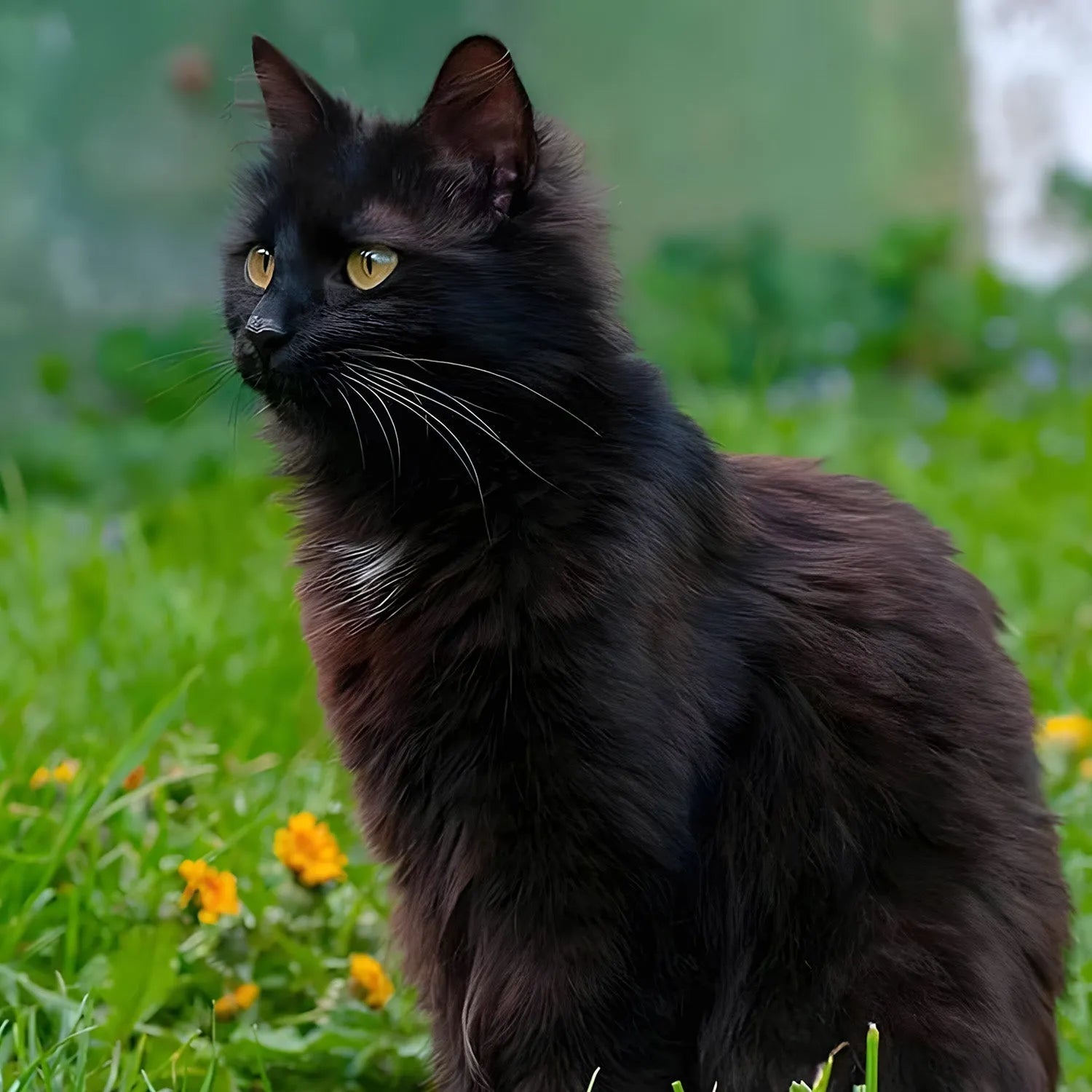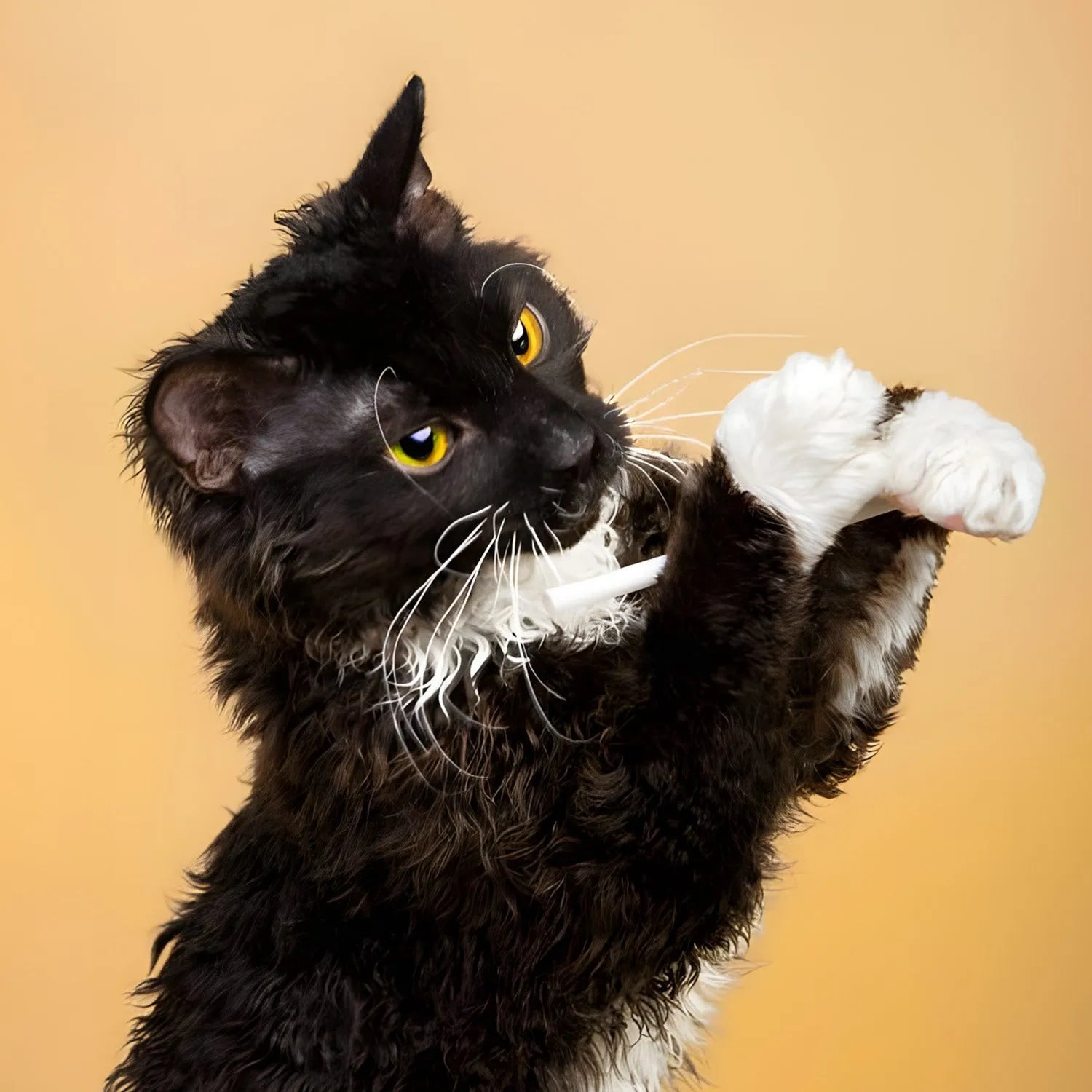Kurilian Bobtail: The Wild-Looking and Strong-Willed Feline
Introduction
The Kurilian Bobtail is a striking breed that exudes wild beauty with its short, pom-pom-like tail, muscular build, and rugged appearance. Hailing from the Kuril Islands in Russia, this breed has lived semi-wild for centuries and has only recently become recognized and popular in domestic homes. Known for its intelligence, strength, and hunting prowess, the Kurilian Bobtail is both independent and loyal, making it a fascinating and rewarding pet for the right family. In this blog, we’ll explore the Kurilian Bobtail’s lifestyle, behavior, grooming needs, trainability, and how it interacts with humans and other pets.
Ratings (1-5)
-
Environmental Adaptability: 5
-
Food Consumption: 3
-
Need for Companionship: 4
-
Trainability: 4
-
Tolerance of Children: 4
-
Ease of Domestication: 4
History and Origins
The Kurilian Bobtail has its origins in the remote Kuril Islands, a volcanic archipelago stretching between Russia and Japan. These islands are home to wild Kurilian Bobtails that have lived there for centuries, surviving as skilled hunters and fishermen. The breed’s distinctive short tail is a natural genetic mutation, and no two tails are exactly alike, giving each Kurilian Bobtail a unique look. It wasn’t until the late 20th century that breeders began selectively breeding Kurilian Bobtails for domestic life, bringing them into homes across Russia and eventually into Europe and North America. The breed remains relatively rare but has a devoted following for its strength, intelligence, and rugged good looks.
Physical Characteristics and Colors
The Kurilian Bobtail is a medium to large-sized cat with a muscular, stocky build. Its most distinctive feature is its short, bobbed tail, which resembles a pom-pom and is made up of a combination of kinks, curves, and twists. The tail is typically about 1-3 inches long, and no two tails are exactly alike. The Kurilian Bobtail has a broad, powerful chest, strong legs, and large, round paws, which contribute to its rugged appearance. The head is wedge-shaped, with wide-set ears and large, expressive eyes that come in shades of green, gold, or yellow. The coat can be short or semi-long, and it comes in a variety of colors and patterns, including tabby, solid, and bicolor.
Lifestyle and Behavior
Kurilian Bobtails are known for their strong-willed and independent nature. They are highly intelligent and have retained much of their natural hunting instinct, making them skilled at catching prey, whether it’s a toy or an insect in the house. Despite their wild ancestry, Kurilian Bobtails are also incredibly affectionate and form strong bonds with their human families. They enjoy spending time with their owners but are not overly clingy and are perfectly content to entertain themselves when left alone. Kurilian Bobtails are active cats that love to climb, jump, and explore their surroundings. They thrive in environments where they can engage in physical activity and mental challenges.
Trainability and Intelligence
Kurilian Bobtails are highly intelligent cats that can be trained to follow commands, perform tricks, and even walk on a leash. They respond well to positive reinforcement, such as treats and praise, and enjoy interactive toys and games that stimulate their minds. Because they are natural hunters, Kurilian Bobtails love games that involve chasing, pouncing, or "hunting" objects. Training sessions with Kurilian Bobtails should be engaging and fun, as they enjoy learning new things and solving puzzles. Their intelligence and curiosity make them natural explorers, and they benefit from having a stimulating environment with plenty of toys and activities to keep them entertained.
Social Behavior and Human Interaction
Kurilian Bobtail cats are affectionate and form strong bonds with their human families, though they tend to be more independent than some other breeds. They are social cats that enjoy spending time with their owners but are not overly demanding of attention. Kurilian Bobtails are known for their gentle nature and are generally calm and composed around people, making them great companions for families, singles, or elderly individuals. While they are not as vocal as some breeds, Kurilian Bobtails will communicate with their owners through soft meows, chirps, and purrs. They are most content when they can engage in regular playtime with their humans and explore their environment freely.
Compatibility with Children and Other Pets
Kurilian Bobtails are excellent companions for children due to their playful and tolerant nature. They enjoy interactive play and are generally patient with children’s antics, provided they are treated with respect. Additionally, Kurilian Bobtails tend to get along well with other pets, including dogs, as long as they are properly introduced. Their sociable and adaptable nature allows them to integrate well into multi-pet households, though they may prefer to have their own space when needed. Kurilian Bobtails are known for their ability to form strong bonds not only with their human families but also with other pets in the household.
Grooming and Care
The grooming needs of a Kurilian Bobtail depend on whether they have a short or semi-long coat. Shorthaired Kurilian Bobtails require minimal grooming, with weekly brushing usually sufficient to remove loose hairs and keep their coat looking healthy. Semi-longhaired Kurilian Bobtails, on the other hand, require more frequent brushing—at least two to three times a week—to prevent tangles and mats. Regular dental care, ear cleaning, and nail trimming are also important to maintain their overall health. Despite their grooming needs, Kurilian Bobtails enjoy the bonding time that grooming sessions provide, and it can be a great way to strengthen the bond between cat and owner.
Health and Lifespan
Kurilian Bobtail cats are generally healthy and robust, with few breed-specific health issues. Their wild ancestry has contributed to their strong constitution, and they are known for being relatively low-maintenance in terms of health care. However, regular veterinary check-ups and a balanced diet are essential to maintain their health. With proper care, Kurilian Bobtail cats can live up to 15-20 years or more. Regular monitoring and preventive care are important to ensure a long and healthy life for your Kurilian Bobtail cat.
Environmental Adaptability
Kurilian Bobtails are adaptable cats that can thrive in various living environments, although they are particularly well-suited to homes where they have plenty of space to roam and explore. They are known for their resilience and can adjust well to different climates and household settings. Whether in an apartment or a house, Kurilian Bobtails will find ways to entertain themselves and stay active. However, they do best in environments where they can engage in regular physical activity, such as climbing, jumping, and exploring. Their adaptable nature makes them well-suited to a wide range of living conditions, but they thrive best in homes where they can be active and receive plenty of mental stimulation.
Feeding Requirements
A balanced diet is crucial for maintaining the Kurilian Bobtail cat's health and energy levels. High-quality cat food that is rich in protein is recommended, especially for such an active and muscular breed. Fresh water should always be available. Because Kurilian Bobtails are highly active, they may require more calories than less active breeds to support their energy levels. Consult your veterinarian for specific dietary recommendations based on your cat's age, weight, and health needs. Monitoring their diet to prevent obesity is important, as Kurilian Bobtails can be prone to overeating if not properly managed.
Conclusion
The Kurilian Bobtail is a unique and independent breed that brings both wild beauty and affection to any household. Their intelligence, strong will, and affectionate nature make them wonderful pets for families and individuals who appreciate an active and self-reliant cat. If you're looking for a cat that is both a skilled hunter and a loyal companion, the Kurilian Bobtail might be the perfect fit for you.
For more information about other cat breeds and pet care tips, stay tuned to our blog!
References:
-
Ivanov, S. (2021). "The Wild and Independent Kurilian Bobtail Cat." *Journal of Feline Studies*, 35(3), 201-215.
-
Richards, A. (2020). "Caring for Your Kurilian Bobtail Cat: A Comprehensive Guide." *Cat Lover’s Magazine*, July issue, pp. 30-40.
-
Harris, E. (2019). "Health and Wellness in Kurilian Bobtail Cats." *Veterinary Journal*, 79(2), 123-137.


